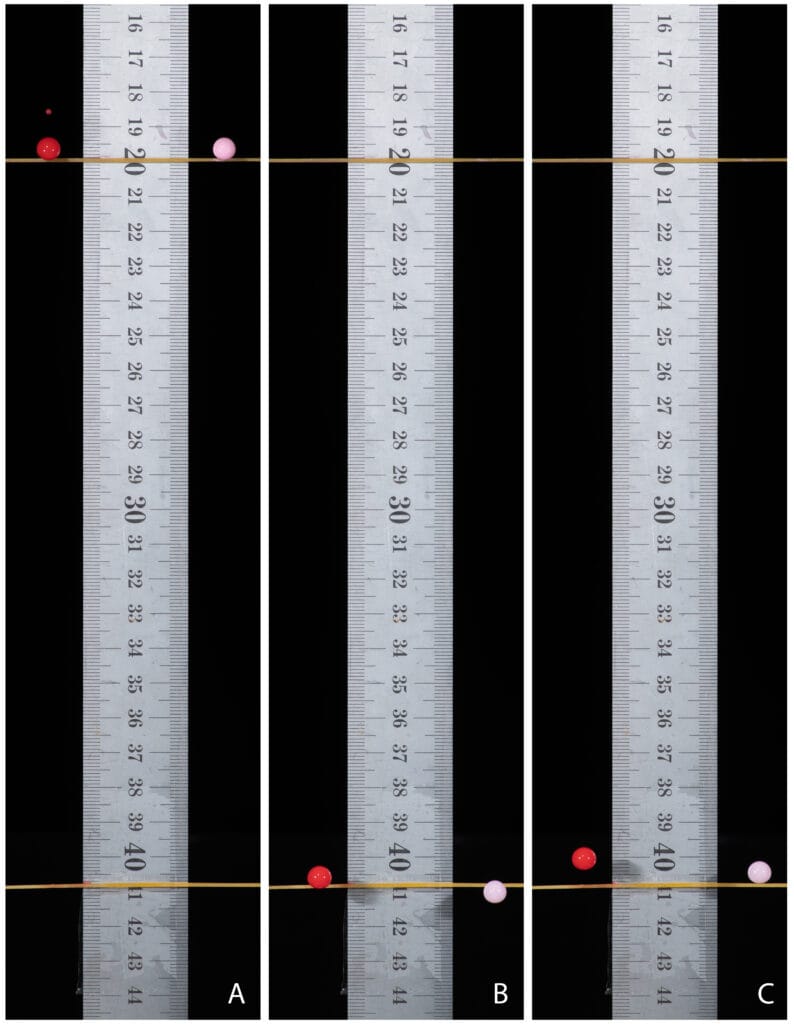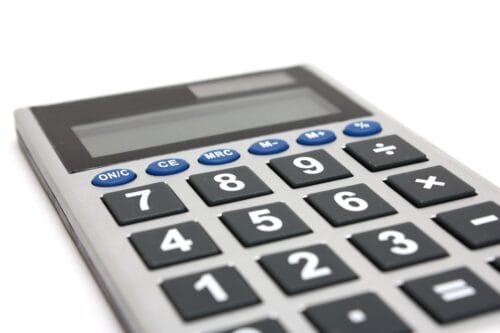Drop Fall Speed
Some time ago, I was thinking about the motion blur that can be captured because of the distance the drop falls during the peak intensity of my speedlights. I was interested in calculating the distance a drop actually falls during this time. This test had 2 parts, firstly, I was going to measure the actual falling drops and the second part was to measure the exact length of time that my speedlight was illuminating the capture. This second part of the test took me off in a whole different direction and I will explain that in another post.
The 3 sample photos were taken of drops created with two adjacent 24v Shako solenoid valves. The 6mm nozzle’s opening was 400mm above the drop tray. The falling drops were captured in the drop zone between 200mm to 407mm. The electronic controller was a 6 station controller by MJKZZ. The drop size for all drops was 30 and the actual fall distance is 207mm.
Image A
My initial settings for the individual solenoids were adjusted using the SYNC feature on the remote so that both the red and pink drop were aligned horizontally. Once that setting was established, I then altered the flash delay (FD) so the synchronised drops were captured at the 200mm mark. With this particular drop mixture and settings, the FD = 268.
Image B (establishing time for RED drop)
The only change made was that the flash delay was increased until the red drop was at the lower level. That setting was FD = 358. The pink drop is at a slightly different lower level and that could be as a result of a slightly different viscosity in the liquids.
Image C (establishing time for PINK drop)
The only change made to this capture was to decrease the flash delay until the pink drop was at the lower level. The final value needed was FD = 353.


Now for a bit of quick calculator work…
The drop distance was 207mm (407-200).
The red drop had a difference between the top and bottom flash delay of 90ms (358-268).
The pink drop had a difference between the top and bottom flash delay of 85ms (353-268).
The 6mm diameter red drop fell 207mm over a time of 90ms. The speed can be calculated by distance / time (207/90 = 2.3mm/ms).
The pink drop fell slightly faster (85ms) so the calculated speed for the 6mm pink drop is 207/85 = 2.43mm/ms.
For the sake of my future calculations I am just going to assume that the drop will fall at about 2.4mm/millisecond. Obviously the speed of a jet of liquid from a pressurised fountain will travel faster but I really just wanted to do this particular timing calculation for interest.
Armed with this somewhat irrelevant bit of information it was time to move on to the 2nd part of the test to measure the speedlight.

Falling objects accelerate initially at 9.81 m/s/s. That acceleration reduces to zero as the object reaches terminal velocity. Drag is proportional to velocity squared so the acceleration reduction is much more significant close to terminal velocity.
Various resources on the web state terminal velocity of small rain drops is around 9 m/s. Your measured velocity is not close to terminal so assuming no acceleration reduction is going to be quite accurate. Squirting from the nozzle may give the drop some initial velocity which could be measured. Apart from that you could just calculate velocity at any point of the fall.
You might try triggering a multi burst if you have a capable speedlight. The Godox speedlights I have will burst at 200Hz which would illuminate a falling drop every 5 ms.
Thanks Bob, your comment has prompted me to plan a test shot with probably 4 solenoids using the burst mode. I have always referred people to an image another waterdrop photographer posted which shows the fall and converging of 3 different drops. In his image you can clearly see the drops acceleration by the increased gap between captured images.